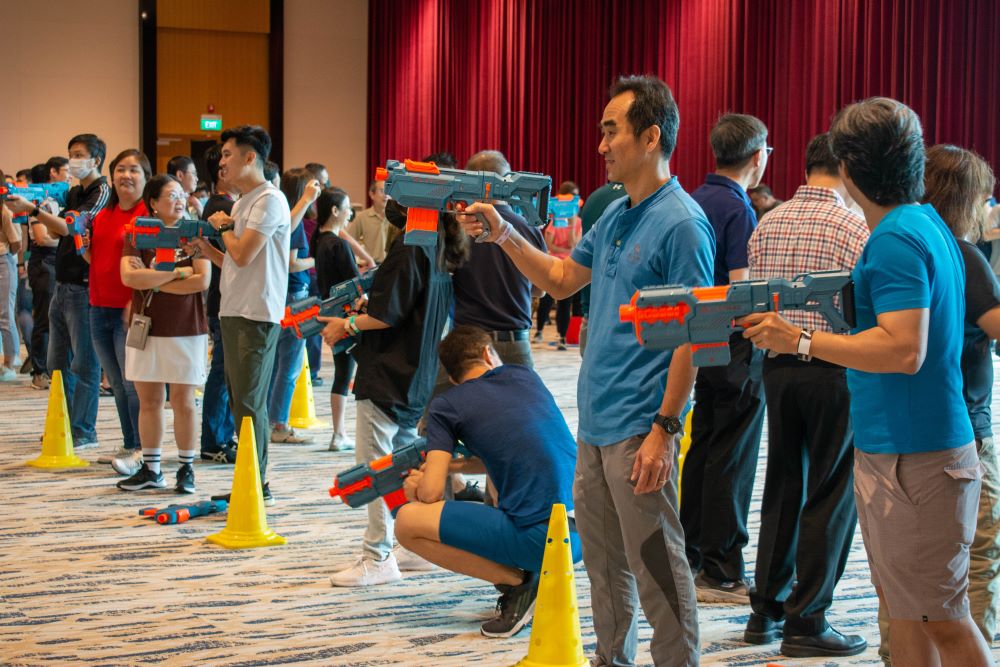Team-Building Activities that Work: From Icebreakers to Challenges
In today’s dynamic workplace, fostering strong team bonds is essential for improving productivity, enhancing communication, and creating a positive work environment. Effective team-building activities can transform a group of individuals into a cohesive and motivated team. From simple icebreakers to more challenging exercises, the key is to choose activities that align with your team’s goals and dynamics. Here, we’ll explore a range of team-building activities that can help your team thrive.
1. Icebreakers: Setting the Stage for Connection
Why Icebreakers Matter
Icebreakers are perfect for new teams or those that haven’t spent much time together. They help break down barriers, encourage communication, and set a relaxed tone for the day.
Activity Example: Two Truths and a Lie
Each team member shares three statements about themselves: two true and one false. The rest of the team guesses which statement is the lie. This activity is a fun way to learn interesting facts about your colleagues and spark conversation.
2. Problem-Solving Challenges: Enhancing Critical Thinking
Why Problem-Solving Matters
Challenges that require problem-solving help team members develop their critical thinking skills and improve their ability to work together under pressure.
Activity Example: Escape Room
Escape rooms require teams to work together to solve puzzles and find clues to “escape” a locked room within a set time limit. This activity promotes collaboration, communication, and quick thinking.
3. Physical Activities: Building Trust and Teamwork
Why Physical Activities Matter
Engaging in physical activities can help build trust, improve communication, and foster a sense of camaraderie among team members.
Activity Example: The Amazing Race
Inspired by the TV show, this activity involves teams racing against each other to complete a series of challenges at different locations. It’s an exciting way to build teamwork, strategizing skills, and physical fitness. Companies like Pulse Activ offer tailored versions of The Amazing Race for corporate team-building events.
4. Creative Activities: Encouraging Innovation and Expression
Why Creative Activities Matter
Creative activities encourage team members to think outside the box and express themselves in new ways, leading to increased innovation and collaboration.
Activity Example: Collaborative Art Project
Provide art supplies and ask the team to create a mural or sculpture together. This activity fosters communication, encourages diverse perspectives, and results in a tangible symbol of team unity.
5. Communication Exercises: Strengthening Interpersonal Skills
Why Communication Exercises Matter
Effective communication is the backbone of any successful team. Exercises that focus on improving communication can help team members understand each other better and work more efficiently.
Activity Example: Blindfold Challenge
Pair up team members, and have one person blindfolded while the other guides them through an obstacle course using only verbal instructions. This exercise highlights the importance of clear communication and trust.
6. Strategy Games: Enhancing Planning and Cooperation
Why Strategy Games Matter
Strategy games require teams to plan, delegate, and work together to achieve a common goal. These activities improve decision-making and cooperative skills.
Activity Example: Tower Building
Using limited supplies like straws, tape, and paper, teams must build the tallest tower possible. This game encourages strategic thinking, creativity, and teamwork.
7. Reflection and Feedback Sessions: Learning and Growing Together
Why Reflection Matters
Taking time to reflect on experiences and provide feedback is crucial for continuous improvement and growth as a team.
Activity Example: After-Action Review
After completing a team-building activity, hold a session where team members discuss what went well, what could be improved, and how they felt about the experience. This open dialogue promotes a culture of continuous learning and improvement.
Conclusion
Effective team-building activities are an investment in your team’s success. Whether you’re breaking the ice with new team members or challenging a seasoned team to solve complex problems, these activities can enhance communication, build trust, and foster a sense of unity. By incorporating a mix of icebreakers, problem-solving challenges, physical activities, creative projects, communication exercises, strategy games, and reflection sessions, you can create a well-rounded team-building program that meets the unique needs of your team.
Remember, the goal of team-building is not just to have fun, but to develop a stronger, more cohesive team that works well together and is prepared to tackle any challenge that comes their way.
To head back to read another article in our blog, click here.

